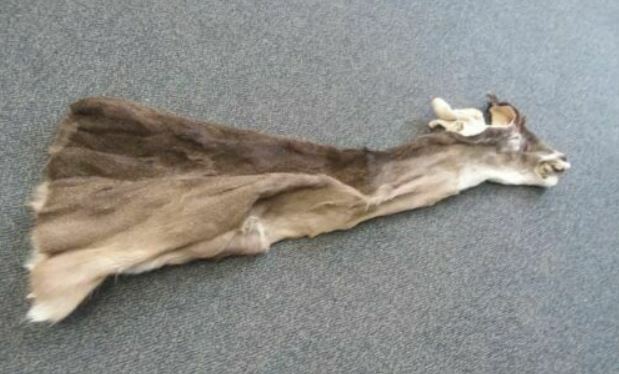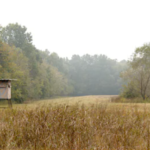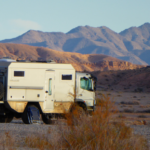How to Skin and Cape a Deer – Complete Guide
The process of how to skin and cape a deer is not as obvious as it sounds. It’s a challenge that demands learning the entire procedure before attempting to perform it.
Preparation is crucial for any task, and skinning a deer is no different. Also, it goes without saying that you need to use the best tools for the job if you want the best skinning experience.

Clear the Area
Make sure you choose a spot where you can work safely and quickly. Clear the ground of rocks and debris that might cause you to stumble or trip. Pick a place that is as clean as possible.
Hanging the Deer
The first step is to hang the deer for skinning. You can use a tree branch, a metal frame, or a pickup with a winch to raise the deer off the ground. You’ll need a chain or a length of sturdy rope and a generous amount of clean, cold water.
Tie the chain or rope tightly around the neck of the deer, and make sure it fits snugly under the chin. Some hunters like to hang their kill upside down. Personally, I prefer to have the deer head up, so the guts can just slide right out when I attend to the field dressing. Either way, hanging the deer makes removing the inner organs a lot easier than it would be on the ground.
Choosing the Perfect Skinning Knife
A lot of non-hunters, or people who are just starting their hunting hobby, don’t realize that there are a wide variety of knives designed to do specific jobs.
Certain tasks require a particular kind of knife. These days, hunters can count themselves lucky that there are just as many knives available to them as there are tasks for them to do.
For skinning the deer, I’d like to focus on a particular type of tool – the skinning knife. You’ll recognize a skinning knife by the narrow-tipped blade designed for precision cutting.
The best skinning knives have a short, short, broad blade that allows them to penetrate the meat quickly and precisely without harming it. Not to mention that the knife must be full-tang, constructed specifically for the blade to run across the entire knife’s length.
Skinning the Deer
1. Begin by skinning up from the hooves, starting from each elbow. Find the elbow joints and with your (sharp) knife and cut deep into the ligaments. Twist the elbow to break it.
2. Slice through the skin around the skull base, taking care not to cut the abdominal tissue or muscles.
3. From the deer’s neck, slice downward to the breastbone, the stomach, and then down forelegs. Avoid letting hair come in contact with the meat.
3. Grasp the skin tight at the neck and pull it down in the direction of the chest. Cutaway any sinew still attached to the inside of the skin with your knife toward the chest.
4. Continue to pull down towards the chest, slicing at the sinew with your sharp skinning knife. The skin should come away easily and quickly.
5. Now, you can take down the deer and lay it on a flat surface to remove the head. Cut through the tissues around the neck, then use a saw to decapitate the deer.
6. Wash the carcass with clean, cold water. It will remove any hair from the meat and help to keep it cool. The carcass will keep for several hours, allowing you to butcher it yourself. Alternatively, take it to a butcher.
Caping the Deer

A lot of newbie hunters are reluctant to cape their kill. They figure they lack the necessary knowledge or skill. But the process is a lot easier than it might appear.
Just as with skinning, caping requires a really sharp knife and a good saw. The two procedures are similar, but with caping, some cuts are slightly different. This makes it helpful to decide whether or not to cape before you make the first cut. Caping begins with just five, relatively simple cuts:
1. Cut a full circle all around the carcass, starting at the middle rib. Cut left to right and all the way around until you’re back where you started. A lot of newbies make the cape too short. Fact is, the more cape you give the taxidermist, the better job he can do.
2. The next cut starts between the ears and continues straight down the dark line that runs down the back of the neck. Continue down the back until you meet your first circular cut.
3. Cut rings around the deer’s front legs. Ideally, you need skin from the knee upwards. Be careful not to cut through the armpit, or you’ll ruin the cape. Now you can proceed to skin the deer as usual.
4. Now it’s time for the most challenging part of the cape: the skull. Return to where you began the cut – on the back of the deer’s neck. You will see a Y between the ears that leads to each antler. Cut from each antler’s base back to that Y, so you end up with a Y-shaped incision.
5. Now slice around each antler’s pedicle, then proceed to pull the skin off the skull.
For the following areas, you should give yourself plenty of time:
The Eyes
Probably the biggest problem in any cape is the back of the eye. Don’t use a knife here. Instead, push your finger inside the back corner.
That will allow you to gather everything around the eye, including the eyelashes and the eyelid. Pull it all out and skin away from the skull.
Your cuts shouldn’t be next to the skin; they should be next to the skull. Cut the skin beneath the eyelid, and make sure you cut while pulling it away with your finger.
The preorbital gland (that’s the scent gland to you and me) is another problem area. You will find them in the front corner of the eyes.
These two concave glands sit snugly inside the skull. You need to pry them out with your fingers before you can carry on with the skull skinning process.
The Mouth
Once you have removed both scent glands, you should turn the deer around, so it’s facing you. Now you can skin down to the corner of the mouth then open it up.
Cut the lip, leaving about 3/4 inch still attached to the cape. You can leave the rest of the lip on the skull. Make another cut, all the way into the back of the mouth and onto the corner.
Slice through the gum and lip. You need to do this on both the bottom and top jaws.
The Nose
Again, start skinning from the eyes to the nose. Skin it along the bottom, removing the hide entirely from the jaw. This part should be easy, and if you’ve done it right, the hide will usually come away without a fuss.
You will come up against the nose pad at the top, and 1 1/2 inches above the nose, you will find the cartilage, just like a human nose. Make a 90° cut into the cartilage.
Cut down to the top jawbone, and then simply peel it away. If you’ve done this right, you’ll be left with a 90° shelf cut out of the animal’s nose.
Not doing it this way could result in you cutting off the nose pad. So, take care, take plenty of time. Make the angled cut because nothing spoils a cape more than a damaged nose pad.
Some Final Tips
Once you’ve detached the cape, there’s a couple of things to remember:
You don’t need to take the entire skull. Just cut the top plate where the antlers join the skull. It will produce a small chunk, around six inches long and about the same width as the deer’s head. That’s where your saw comes into play. The taxidermist will then incorporate the skull plate into the finished mount.
Try to cool the cape as quickly as possible. But, make sure not to let it dry out completely. Cooling the cape will usually take between 30 and 60 minutes, depending on the climate and environment. It’s entirely sufficient to single-fold the cape and wait for it to cool. Then you can roll it up and take it away. Remember, on a cold day, the time it takes for the cape to cool will be a lot shorter.
Keep dirt away from the cape. And always remove every scrap of meat. Remember, meat holds heat. You should double-check that the meat is not on the cape; it’s on the deer. Nothing spoils a cape like the heat from meat left on it. Leave the meat on the deer, not the hide. Try taking your cape to a taxidermist with flesh still attached, and they’ll tell you that the hair is bound to fall out. And they’ll be right.
Finally, don’t rush, but work as quickly as you can. Bring the cape to the taxidermist as fast as possible. If you can’t do this for some reason, you should wrap up your cape good and tight. Put it in a Ziplock bag and place it in the freezer. A frozen cape should keep well for over a year. Make sure to check out our other hunting articles!











Leave a Reply